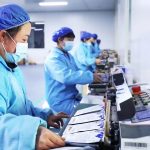Injection mold Manufacturing and Plastics Production
As early as the 1860s, people were learning how to make and use plastics. Due to its flexibility when warm and ability to hold a shape when cool, plastic made it easier to create new products. Unfortunately, it was difficult to produce affordable, quality plastics that did not warp or break.
As manufacturers experimented with plastic polymers, small items became easier to produce in greater quantities. But it wasn’t until the 1940s, when demand for large amounts of inexpensive, mass-produced plastics rose, that the injection mold manufacturing industry really took off.
What Is Injection Mold Manufacturing?
Injection mold manufacturing is a way to mass-produce products and product components for many different industries. Today, many mass-produced plastics are made using this process. Common examples of plastic products that the everyday consumer uses include combs and buttons. But more complex items are made too. Everything from vehicle parts to medical devices are often mass-produced using this process.
How Does It Work?
The idea is simple: Create a mold that can be used again and again to create exact replicas of the desired product. Originally associated with plastics, other materials including metal and glass are now used in this process.
The process is fairly simple as well. After an industrial engineer designs the product, a moldmaker creates a mold based on engineering specifications. The mold itself is usually made of steel or aluminum and attached to a press that holds it in place until the product is set.
To make the actual product, the plastic or other material is heated until it is pliable enough to be forced into the mold. Once in the mold, the press exerts force and holds the molding in place until the product sets and cools. The entire production is so perfectly engineered that there is usually no need to perform any additional work on the piece once it comes out of the mold.
The Impact of Injection Mold Manufacturing Today
Injection mold manufacturing has resulted in reduced cost in many industries. The ability to mass-produce items using a single design saves companies time and money over making each item or component at an individual level. This method of manufacturing has allowed companies to cut down on wasted materials while producing large amounts of the same item quickly and accurately.
The process has also proven highly useful in the recycling industry. Since the plastics and polymers must be melted down before they can be injected into the cast, used products, rejected parts and excess scrap parts can be melted down and reused in new products.
Although this type of manufacturing has many benefits, it is not suitable for every business. The start-up costs are high and custom-engineered casts are needed for every product that is created. They are best for companies that routinely produce large amounts of the same product over and over again because as production quantities rise, the cost of production per item decreases. For businesses that do not produce items on a large enough scale, the time and labour-saving benefits may not outweigh the costs.
By China mold maker
About PTJMould Industrial Company Limited:
PTJMould is one of the best plastic injection molding manufacturer that offer great services to their clients when it comes to manufacturing advanced molding tools. They export their tools to different parts of the world and have become one of the most famous names in the industrial sector.
Inquiry
Link to this article:Injection Mold Manufacturing
Reprint Statement: If there are no special instructions, all articles on this site are original. Please indicate the source for reprinting:Mold Wiki,Thanks!^^


